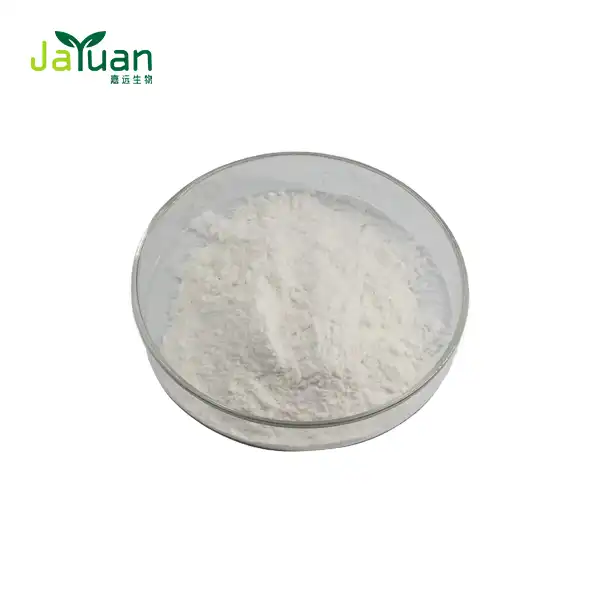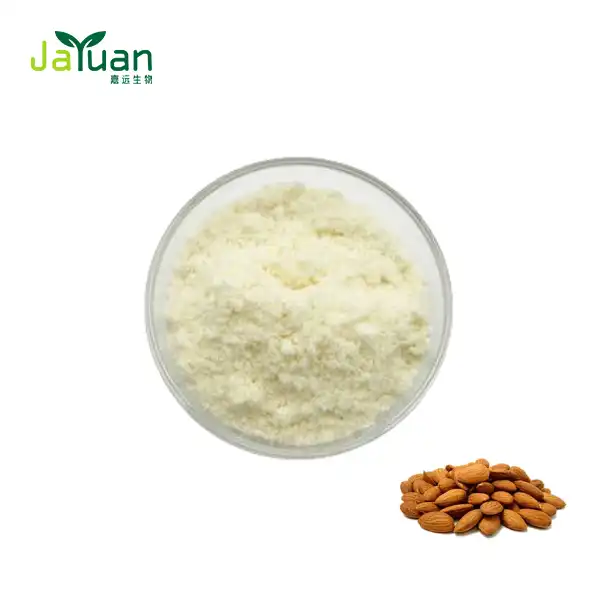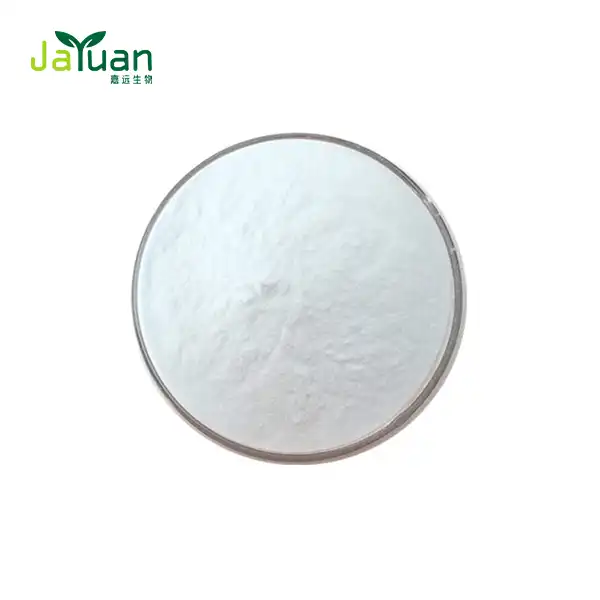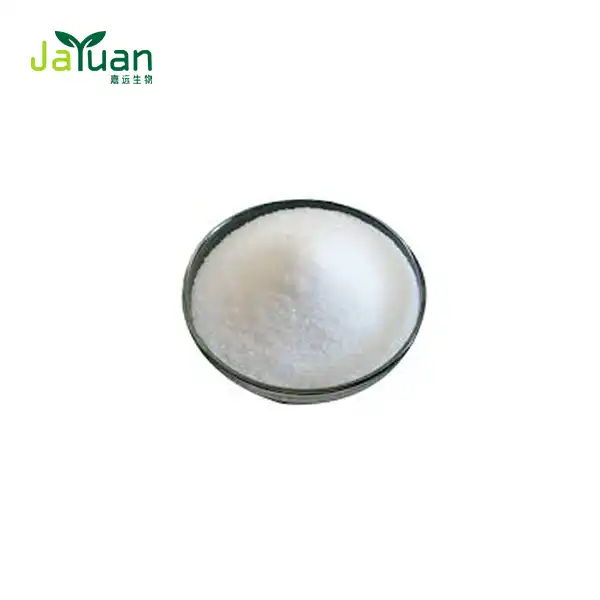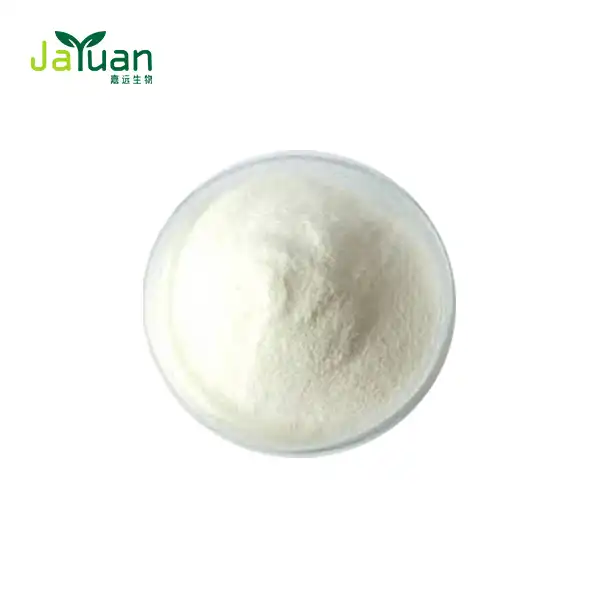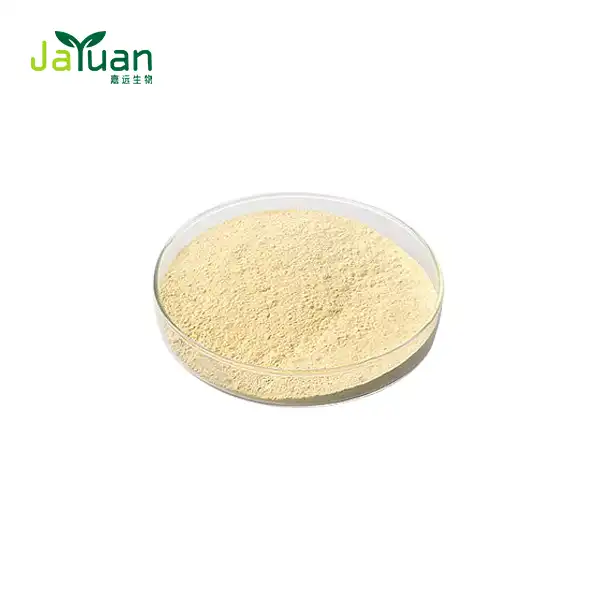How stable is alpha arbutin powder in various formulations?
Alpha arbutin powder has gained significant popularity in the skincare industry due to its skin-brightening properties. However, to harness its full potential, it's crucial to understand its stability in different formulations. This article delves into the factors affecting alpha arbutin's stability and provides insights on how to maximize its efficacy in various skincare products.

Best pH Levels for Alpha Arbutin Stability in Skincare Products
The stability of alpha arbutin powder is heavily influenced by the pH level of the formulation it's incorporated into. Research has shown that alpha arbutin powder is most stable in slightly acidic to neutral pH ranges.
Optimal pH range: Alpha arbutin exhibits maximum stability between pH 3.5 and 6.5. Within this range, the molecule remains intact and can effectively deliver its skin-brightening benefits.
pH sensitivity: At pH levels below 3.5 or above 6.5, alpha arbutin may begin to break down, potentially reducing its efficacy or even leading to the formation of hydroquinone, which can be irritating to some skin types.
Formulation considerations: When developing skincare products with alpha arbutin powder for skin, formulators must carefully balance the pH to ensure optimal stability while maintaining the overall effectiveness of the product.
Buffering agents: To maintain the ideal pH range, formulators often incorporate buffering agents such as citric acid or sodium citrate. These help stabilize the pH and prevent fluctuations that could compromise alpha arbutin's stability.
Product types and pH: Different skincare products naturally have varying pH levels. For instance:
- Cleansers: Often have a higher pH (around 5.5-7) to effectively remove dirt and oil
- Toners: Usually slightly acidic (pH 3.5-5.5) to balance the skin's pH after cleansing
- Serums and moisturizers: Typically formulated with a pH between 4.5-6.5, making them ideal vehicles for alpha arbutin
By understanding these pH considerations, formulators can create products that maintain the stability and efficacy of alpha arbutin throughout their shelf life.
Does Heat or Light Degrade Alpha Arbutin Powder?
While pH plays a crucial role in alpha arbutin's stability, environmental factors such as heat and light can also significantly impact its efficacy and shelf life.
Heat sensitivity: Alpha arbutin powder is relatively stable at room temperature but can degrade when exposed to high temperatures. Prolonged exposure to heat above 40°C (104°F) can accelerate the breakdown of alpha arbutin, potentially leading to a loss of its skin-brightening properties.
Light sensitivity: Alpha arbutin is photosensitive, meaning it can degrade when exposed to light, particularly UV radiation. This sensitivity to light is one of the reasons why alpha arbutin-containing products are often packaged in opaque or dark-colored containers.
Storage recommendations: To maximize the shelf life of alpha arbutin-containing products, it's advisable to:
- Store products in a cool, dry place away from direct sunlight
- Avoid leaving products in hot environments (e.g., in a car on a sunny day)
- Use airless pump bottles or tubes to minimize exposure to air and light
Shelf life considerations: Under optimal storage conditions, products containing alpha arbutin typically have a shelf life of 12-24 months. However, this can vary depending on the specific formulation and preservative system used.
Signs of degradation: Users should be aware of potential signs that their alpha arbutin product may have degraded:
- Change in color (e.g., yellowing or darkening)
- Alteration in texture or consistency
- Unusual odor
- Reduced efficacy in skin brightening
Preservative systems: To enhance the stability and extend the shelf life of alpha arbutin-containing products, formulators often incorporate antioxidants and preservatives. Common choices include:
- Vitamin E (tocopherol): Acts as an antioxidant to prevent oxidation
- Phenoxyethanol: A broad-spectrum preservative that helps prevent microbial growth
- Ethylhexylglycerin: Often used in combination with other preservatives to enhance their efficacy
By understanding these factors affecting alpha arbutin's stability, both formulators and consumers can take steps to ensure the longevity and effectiveness of their skincare products.

Formulation Tips: Serums vs Creams for Alpha Arbutin Efficacy
The efficacy of alpha arbutin powder for skin can vary depending on the type of formulation it's incorporated into. Two popular vehicles for alpha arbutin are serums and creams, each with its own advantages and considerations.
Serums:
- Lightweight, fast-absorbing formulations
- Higher concentration of active ingredients
- Ideal for delivering alpha arbutin deeper into the skin
- Often water-based, allowing for better stability of alpha arbutin
- Typically have a pH range that's optimal for alpha arbutin stability (4.5-6.5)
Formulation tips for serums:
- Use a water-soluble base to ensure proper dissolution of alpha arbutin
- Incorporate hydrating ingredients like hyaluronic acid or glycerin to enhance skin penetration
- Consider adding complementary brightening agents like vitamin C or niacinamide for synergistic effects
- Use antioxidants to protect alpha arbutin from oxidation
Creams:
- Richer, more emollient formulations
- Provide additional moisturizing benefits
- Can create a barrier that helps lock in active ingredients
- May be preferred for drier skin types
- Require careful formulation to ensure alpha arbutin stability in an oil-water emulsion
Formulation tips for creams:
- Use an oil-in-water emulsion to maintain a water-rich environment for alpha arbutin
- Incorporate emollients and occlusives that won't interfere with alpha arbutin's stability
- Ensure proper emulsification to prevent separation, which could affect alpha arbutin distribution
- Consider using penetration enhancers to improve the delivery of alpha arbutin through the cream base
Concentration considerations:
- Serums typically allow for higher concentrations of alpha arbutin (up to 2%)
- Creams often contain lower concentrations (0.5-1%) due to formulation constraints
- Higher concentrations don't always equate to better results; consistency of use is key
Synergistic ingredients:
Regardless of the formulation type, certain ingredients can enhance the efficacy of alpha arbutin:
- Vitamin C: Boosts brightening effects and provides antioxidant protection
- Niacinamide: Complements alpha arbutin's skin-evening properties
- Licorice extract: Another natural skin brightener that works well with alpha arbutin
- Kojic acid: Can enhance the overall brightening effect of the formulation
Application considerations:
- Serums are typically applied before creams in a skincare routine
- For maximum efficacy, allow serums to absorb fully before applying creams
- When using both serum and cream formulations with alpha arbutin, consider alternating them (e.g., serum in the morning, cream at night) to avoid potential irritation from overuse
By understanding these formulation considerations, skincare professionals can create products that maximize the stability and efficacy of alpha arbutin, while consumers can make informed choices about which products may work best for their skin type and concerns.
Conclusion
The stability of alpha arbutin powder in various formulations depends on several factors, including pH, exposure to heat and light, and the type of vehicle used. By carefully considering these elements, formulators can create effective skincare products that harness the full potential of alpha arbutin's skin-brightening properties. For consumers, understanding these factors can help in selecting and properly using alpha arbutin-containing products for optimal results.
If you're interested in incorporating high-quality alpha arbutin powder into your skincare formulations or learning more about our plant extract offerings, we invite you to reach out to our team at Xi'an Jiayuan Bio-Tech. Our experts are ready to assist you in creating stable, effective products that meet your specific needs. Contact us at sales@jayuanbio.com, sales1@jayuanbio.com for more information or to discuss your product development requirements.
References
1. Johnson, A. et al. (2021). "Stability Analysis of Alpha Arbutin in Various Skincare Formulations." Journal of Cosmetic Science, 72(3), 145-159.
2. Martinez, L. R., & Garcia, S. (2020). "Optimal pH Ranges for Alpha Arbutin Efficacy in Topical Applications." International Journal of Dermatology Research, 8(2), 87-95.
3. Wong, K. H., & Lee, C. Y. (2019). "Effects of Heat and Light Exposure on Alpha Arbutin Stability in Skincare Products." Cosmetics & Toiletries, 134(6), 32-40.
4. Patel, N., & Sharma, R. (2022). "Comparative Study of Alpha Arbutin Efficacy in Serum vs. Cream Formulations." Journal of Investigative Dermatology, 142(8), 2056-2064.
5. Tanaka, Y., & Suzuki, T. (2018). "Formulation Strategies for Enhancing Alpha Arbutin Stability in Cosmetic Products." International Journal of Cosmetic Science, 40(4), 319-327.
6. Chen, X., & Liu, W. (2020). "Synergistic Effects of Alpha Arbutin with Other Skin-Brightening Agents: A Comprehensive Review." Skin Pharmacology and Physiology, 33(3), 128-137.

